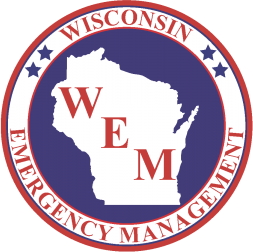Wisconsin focuses on energy emergency planning
MADISON, Wis. – Wisconsin relies on many sources to generate the electricity that powers homes, gas that fuels vehicles, and natural gas that heats homes. A disruption in moving those energy supplies could have cascading effects across Wisconsin, which is why several state agencies have been working on plans to address the potential for a long-term energy emergency.
This month, Wisconsin Emergency Management (WEM) and the Office of Energy Innovation (OEI) hosted a discussion with multiple state agencies on energy security. Key stakeholders were presented with a hypothetical, but realistic scenario in which a weather event disrupts the natural gas and electrical distribution systems across a large area of the state. Participants in the exercise identified what steps would be needed to address the incident and what potential roadblocks they may have to deal with.
“One of the goals of this initiative is improving our response to energy emergencies,” said Drew Werner, Critical Infrastructure Planner with Wisconsin Emergency Management. “Each exercise we do helps key agencies have a better understanding of their roles, responsibilities, and resources available should an energy emergency occur.”
Over a three-year period, WEM and OEI worked with state agencies, the petroleum industry, Federal Emergency Management Agency (FEMA), U.S. Department of Energy, U.S. Army Corps of Engineers, and other partners to develop a new Wisconsin Petroleum Shortage Contingency Plan, which addresses gaps in existing plans.
“We want to foster energy security and resilience among state and local agencies,” said Megan Levy, Office of Energy Innovation Resilience Strategy and Energy Assurance Coordinator. “If each county, tribal, or city emergency manager is prepared, the state is better prepared.”
The final phase of the SAFER2 initiative will be an exercise in June involving a regional response to a long-term energy emergency. WEM and OEI intend to begin sharing templates and best practices for local and tribal energy emergency plans before the end of 2022.
NOTE: This press release was submitted to Urban Milwaukee and was not written by an Urban Milwaukee writer. While it is believed to be reliable, Urban Milwaukee does not guarantee its accuracy or completeness.






















